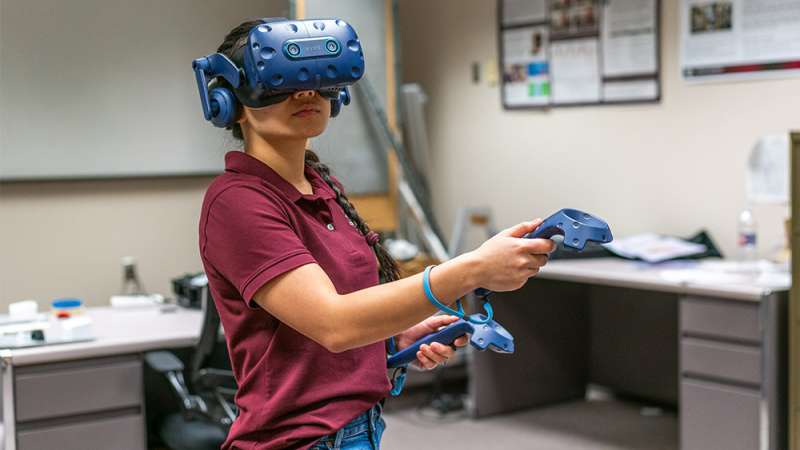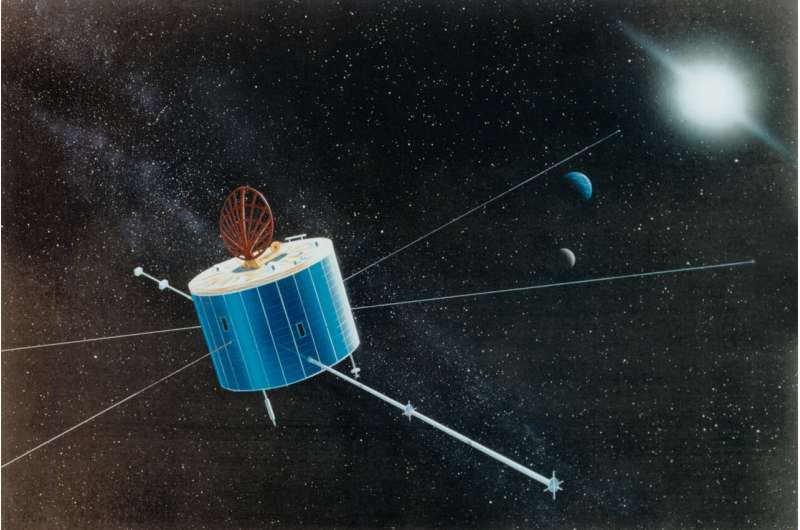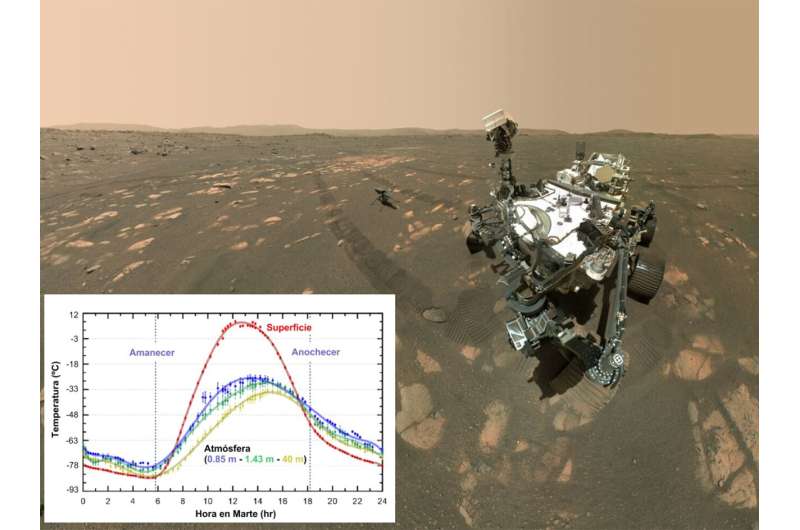
Copernical Team
How was the solar system formed? The Ryugu asteroid is helping us learn
 Mineral samples collected from the Ryugu asteroid by the Japan's Hayabusa2 spacecraft are helping UCLA space scientists and colleagues better understand the chemical composition of our solar system as it existed in its infancy, more than 4.5 billion years ago.
In research recently published in Nature Astronomy, scientists using isotopic analysis discovered that carbonate minerals from the
Mineral samples collected from the Ryugu asteroid by the Japan's Hayabusa2 spacecraft are helping UCLA space scientists and colleagues better understand the chemical composition of our solar system as it existed in its infancy, more than 4.5 billion years ago.
In research recently published in Nature Astronomy, scientists using isotopic analysis discovered that carbonate minerals from the Light-based tech could inspire Moon navigation and next-gen farming
 Super-thin chips made from lithium niobate are set to overtake silicon chips in light-based technologies, according to world-leading scientists in the field, with potential applications ranging from remote ripening-fruit detection on Earth to navigation on the Moon.
They say the artificial crystal offers the platform of choice for these technologies due to its superior performance and rece
Super-thin chips made from lithium niobate are set to overtake silicon chips in light-based technologies, according to world-leading scientists in the field, with potential applications ranging from remote ripening-fruit detection on Earth to navigation on the Moon.
They say the artificial crystal offers the platform of choice for these technologies due to its superior performance and rece What is the Chemistry and Mineralogy Instrument?
 Minerals are like a time capsule; they provide a record of what the environment was like at the time they formed. Different minerals are linked to different kinds of environments. The temperature, pressure, and chemical ingredients that were present - including water - determine what minerals form and how they are altered.
For example, gypsum is a mineral that contains calcium, sulfur, and
Minerals are like a time capsule; they provide a record of what the environment was like at the time they formed. Different minerals are linked to different kinds of environments. The temperature, pressure, and chemical ingredients that were present - including water - determine what minerals form and how they are altered.
For example, gypsum is a mineral that contains calcium, sulfur, and Structural details of Long March 9 revealed
 Chinese rocket researchers are now definite on the overall structural design for the nation's super-heavy carrier rocket, known as the Long March 9, a project insider said on Wednesday.
Gu Mingkun, a senior rocket designer at the China Academy of Launch Vehicle Technology, the country's leading rocket maker, said at a news conference that the baseline model of the Long March 9 will be a la
Chinese rocket researchers are now definite on the overall structural design for the nation's super-heavy carrier rocket, known as the Long March 9, a project insider said on Wednesday.
Gu Mingkun, a senior rocket designer at the China Academy of Launch Vehicle Technology, the country's leading rocket maker, said at a news conference that the baseline model of the Long March 9 will be a la Seven kilo Antarctica meteorite found
 Antarctica is a tough place to work, for obvious reasons- it's bitterly cold, remote, and wild. However, it's one of the best places in the world to hunt for meteorites. That's partly because Antarctica is a desert, and its dry climate limits the degree of weathering the meteorites experience.
On top of the dry conditions, the landscape is ideal for meteorite hunting: the black space rocks
Antarctica is a tough place to work, for obvious reasons- it's bitterly cold, remote, and wild. However, it's one of the best places in the world to hunt for meteorites. That's partly because Antarctica is a desert, and its dry climate limits the degree of weathering the meteorites experience.
On top of the dry conditions, the landscape is ideal for meteorite hunting: the black space rocks SpaceX rocket launches U.S. military satellite into orbit
 Elon Musk's SpaceX launched one of its Falcon 9 rockets Wednesday morning with a GPS satellite on board, part of a U.S. Space Force program to have a constellation of 32 navigation satellites orbiting the Earth.
The rocket blasted off from Cape Canaveral Space Force Station in Florida at 7:24 a.m. EST carrying the fifth Lockheed Martin-made Space Vehicle 6 of the so-called GPS 3 constel
Elon Musk's SpaceX launched one of its Falcon 9 rockets Wednesday morning with a GPS satellite on board, part of a U.S. Space Force program to have a constellation of 32 navigation satellites orbiting the Earth.
The rocket blasted off from Cape Canaveral Space Force Station in Florida at 7:24 a.m. EST carrying the fifth Lockheed Martin-made Space Vehicle 6 of the so-called GPS 3 constel Incorporating scents into a VR environment suitable for spacefarers

Astronauts are heading back to the moon, and this time they are focusing on establishing the first long-term presence. Afterward, NASA has its sights set on a trip to Mars.
With these long-duration missions ahead, new challenges will have to be accounted for on every front. The moon is about 238,855 miles from Earth, but a trip to Mars for an astronaut means traveling around 140 million miles away and leaving our planet for about three years. Because of this distance, astronauts will also face up to a 20-minute communication delay from Earth to Mars.
NASA's Geotail mission operations come to an end after 30 years

After 30 years in orbit, mission operations for the joint NASA-JAXA Geotail spacecraft have ended, after the failure of the spacecraft's remaining data recorder.
After its launch on July 24, 1992, Geotail orbited Earth, gathering an immense dataset on the structure and dynamics of the magnetosphere, Earth's protective magnetic bubble. Geotail was originally slated for a four-year run, but the mission was extended several times due to its high-quality data return, which contributed to over a thousand scientific publications.
While one of Geotail's two data recorders failed in 2012, the second continued to work until experiencing an anomaly on June 28, 2022. After attempts to remotely repair the recorder failed, the mission operations were ended on November 28, 2022.
"Geotail has been a very productive satellite, and it was the first joint NASA-JAXA mission," said Don Fairfield, emeritus space scientist at NASA's Goddard Space Flight Center in Greenbelt, Maryland, and NASA's first project scientist for Geotail until his retirement in 2008.
The rich meteorology of Mars studied in detail from the Perseverance rover

Perseverance is a NASA autonomous vehicle that arrived at the Jezero Crater (the bed of an ancient, now dried-up lake on Mars) on February 18, 2021. The rover is equipped with seven novel, complex scientific instruments dedicated to exploring the planet's surface in search of signs of possible past life, collecting and depositing samples to be brought back to Earth, testing new technologies for use in human exploration, and studying the planet's atmosphere in detail.
With regard to the aim of studying the atmosphere, the MEDA (Mars Environmental Dynamics Analyzer) instrument has been obtaining novel results. MEDA's lead researcher is José Antonio Rodríguez-Manfredi of the Centre for Astrobiology (CAB) in Madrid, and it has had the participation of a team from the UPV/EHU's Planetary Sciences Research Group. The instrument comprises a set of sensors that measure temperature, pressure, wind, humidity and properties of the dust that is always present in suspension in the Mars atmosphere.
Scientists use laser to guide lightning bolt for first time
 Scientists said Monday they have used a laser beam to guide lightning for the first time, hoping the technique will help protect against deadly bolts - and one day maybe even trigger them.
Lightning strikes between 40-120 times a second worldwide, killing more than 4,000 people and causing billions of dollars worth of damage every year.
Yet the main protection against these bolts from a
Scientists said Monday they have used a laser beam to guide lightning for the first time, hoping the technique will help protect against deadly bolts - and one day maybe even trigger them.
Lightning strikes between 40-120 times a second worldwide, killing more than 4,000 people and causing billions of dollars worth of damage every year.
Yet the main protection against these bolts from a 
